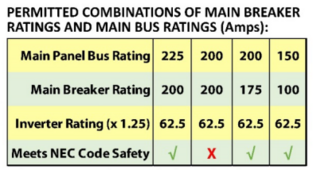I'm headed basically the same way for a Florida system. I haven't quite chosen between the EG4 PowerPro or a set of rack batteries. Each has its own benefits. The 18KPV does integrate a lot of stuff and I am definitely a minimalist when it comes to having boxes.OK I think I am heading down the right path after a month of investigating, discussing and finally going with the EG4-18kPV and because of the NEM3 net metering requirements, three of the EG4 PowerPro 14.3 kWh wall mount batteries, all compliant with California BS requirements.
Interesting. I thought the 18KPV was considered loud by some folks.-The noise level at full load vs others was much less through my investigations.
One thing I do not like about the EG4 setup is the stacking of the inverter on the battery means you have to unstack the inverter and wire chase to replace the battery. I grant it all looks nice, but there's a hidden cost to that in the future. Taking down the inverter just to free the battery is a major effort depending on how fixed all the conduits end up being into the junction box.-The ease of installation with the matching batteries was a big plus. Batteries include conduit boxes and all paralleling cables.
I agree. If shading is not an issue, optimizers are useless. That is the same with my system.-No optimizers as the extra cost at this time does not make sense. No chance of shading outside of clouds.
I am starting to sense they might be the go to folks for my drawings, too.Worked with GreenLancer on the drawings for submitting to SLO County Building department and PG&E. This was a relatively painless process as I also needed to receive the Electrical Engineering stamps through them.
I have questions about your drawing, forgive me if they are stupid.I’ve attached the drawing below for feedback from all in the case I am missing something that needs attention early on.
A. Main Panel Back Feed
In your main panel, you are using a 100 A back feed breaker with a 200 A service. I thought there was a code requirement (as indicated in the 18KPV manual) that the panel bus bars had to be larger the main breaker by some rule. Here is the chart in the manual:

One of the questions I face is if my main panel has 225 A bus bars with a 200 A breaker so I can back feed with a 70 A breaker. Your drawing clearly goes off chart. The reason this limit exists is that if you draw 200 A from the grid and pull power from your inverter at the same time, you will go over the bus bar rating. You can a little over it because you can place your back feed breaker at the opposite end of the bus bar and thus split the loads up. As drawn, your 100 A back feed breaker is at the top of your breaker stack and it needs to be at the bottom for this bus bar reason.
B. AC Disconnect
Like usual, there is an AC disconnect from the inverter to the main panel. But that disconnect actually does almost nothing. If you pull it, the main panel is hot from the grid, the subpanel is hot from the inverter, the batteries are hot supply the inverter, and the solar lines are hot if there is sunlight. So why does this disconnect exist? It is a useless box, IMO, and I haven't found anyone who can explain its purpose other than uselessly saying it is required by code. The code usually has logical reasons, but that escapes me here.
C. Rapid Shutdown
I get it that your ground array doesn't need per panel rapid shutdown thus avoiding a per panel RSD device. But that doesn't seem to negate all need for RSD at the inverter and battery level. Given the AC disconnect doesn't do hardly anything, you probably still need an RSD button where a firefighter can activate it. This would shutdown the batteries and the inverter. If the utility meter is pulled that shuts down the grid and everything except the PV lines are now cold. The PV can be shutdown with the DC disconnect. Without RSD, you can't shut down the inverter or batteries so the subpanel is still hot. Maybe this is detailed on another drawing?
D. Bypass Ability
In this system design, all sub panel power must pass through the inverter. If the inverter never fails, no problem. But if you have an issue with it and want to service it, you are forced to shutdown everything on the sub panel, which should be the most critical loads in your house. If you put in a manual transfer switch, it can allow the sub panel to be powered from the inverter as drawn, or it could allow selecting a breaker in the main panel to bypass the inverter. In that case, you can turn off the main panel back feed breaker and flip the transfer switch and now the inverter is AC isolated from your house where everything, main and sub panel, are now on the grid. People who don't plan for failures or service usually regret it.
My main annoyance with the transfer switch is that USA legal options are ugly, big, and expensive. The European ones are so much nicer, but, alas, not legal here.
E. Minor Nits
The 18 KPV is shown with 3 battery terminals, it has only 2.
EMT is called out for most of your conduit. My understanding is that EMT is required for the PV wiring indoors but otherwise I thought PVC conduit was usable elsewhere. PVC conduit is cheaper, easier to install and lasts longer.
Mike C.


